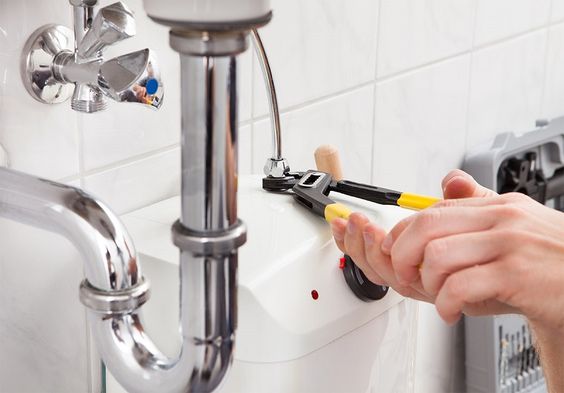
How To Fix Some of the Most Common Plumbing Problems
Plumbing problems can be a real pain. Faulty faucets, clogged sinks, and drains as well as faulty water heaters are just some of them.
We have listed some of the most common issues you might encounter with your plumbing. Understanding how to deal with them can help you take better care of your water lines and fixtures. Let’s take a look at these problems below.
1. Clogged Shower Drains
Bath and shower drains are typically clogged by hair and soap scum. You might need a plunger or a plumber’s snake to remove them.
When using a plunger, put petroleum jelly on the edge of its suction pad. This will help improve its seal. And then, make sure there is enough water to submerge the head of the plunger before plunging vigorously to remove the clog.
Meanwhile, you might want to use a plumber’s snake for more difficult situations that a plunger can’t handle. Here’s how to use it:
- Put the auger end of the plumbing snake into the clogged drain.
- Crank the handle until the snake is completely through. When it gets too tough to crank, let go of the crank and start again.
- Retract the cable clockwise to remove or break up the clog.
- After the drain cable has been fully retracted and the clog is broken up or removed, water should start flowing again.
- Remember to clean the plumber’s snake after use.
You can also use water, baking soda, and vinegar to dissolve the blockage in your plumbing system. Start by pouring boiling water down the drain. And then, dump in the baking soda, followed by vinegar.
As baking soda and vinegar start to combine, the solution will fizz, but this will eventually die down. After this, let the mixture sit there for a few minutes to do its job. After some time, pour hot water into the drain one more time. It should make a suction sound, as the drain is being unclogged.
2. Running Toilet
If your water bill seems too high, you might want to check for a running toilet. It can cost you a ridiculous amount of money, not to mention a lot of water. It can use up to 200 gallons each day. The most common cause of this issue is a faulty flapper valve. This device controls all the water coming into the tank and it also allows water to rush into the bowl.
To test a faulty flapper valve, put a few drops of food coloring into the tank. If it leaks into your toilet, it means the flapper valve can’t properly seal the tank anymore.
Fixing it can be straightforward. Just buy a new flapper valve from your local hardware store to replace the old one. To install it, turn off the water source from your toilet. After that, flush your toilet to remove the water from the tank. You can now easily replace the old flapper valve with the new one.
3. Dripping Faucets
Similar to running toilets, dripping faucets waste a lot of water, causing your bill to go up. The bottom of the problem can be a washer that has become stiff, torn, or dislodged due to wear and tear.
A person who has the basic tools and DIY skills can fix this problem. Just turn off the main water supply, disassemble the problematic faucet, and replace its worn-out washer with a new one.
4. Leaking Pipes
Leaking pipes can be really annoying. It can do damage to flooring, ceiling, and furniture too. Due to the leaking pipes, the surrounding area will be damp, which is what bugs such as cockroaches love to hide. A damp environment is best for these creatures to live in. This problem typically occurs during winter, when cold temperatures freeze the water in your pipes, causing them to expand and eventually burst. Plumbers can help you with this.
5. Slow Draining Sink
Just like clogged shower drains, this problem is caused by a blockage. For bathroom sinks, the blockage is usually caused by hair and soap scum. For kitchen sinks, it might be a mix between food and fat. There are methods you can try to unclog your sinks like using a plunger, pouring chemical clog removers, and using a plumber’s snake.
One of the most used methods is working with chemical clog removers. Now, there are things you need to remember when using chemicals. The first one is to use goggles and gloves for safety. The chemicals you are using might have a direct effect on your skin and eyes. It’s better to be safe and use protection. The second one is to be sure to follow the instructions on the label and not use too much of the chemical product. The last one is to not mix the chemicals that you are using. Mixing those chemicals might create poisonous gas.
Talk to a Professional That Offers Quality Plumbing Service
If all else fails and none of these tips work, it’s time to call professionals that provide a plumbing service. They have the knowledge and expertise to solve all of your plumbing problems. Do not hesitate to reach out to your local plumber for help.